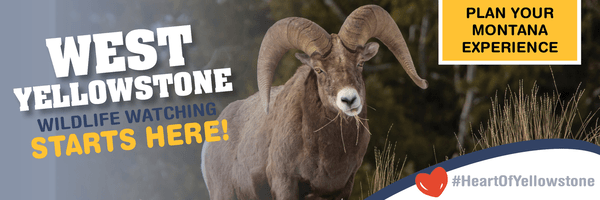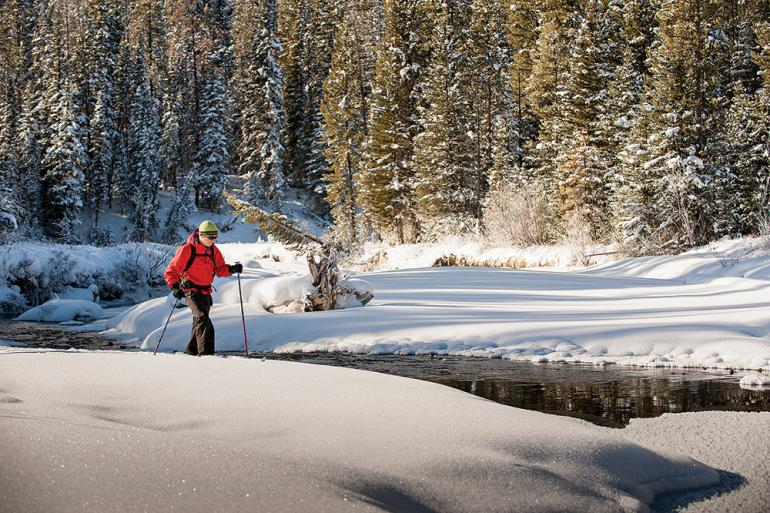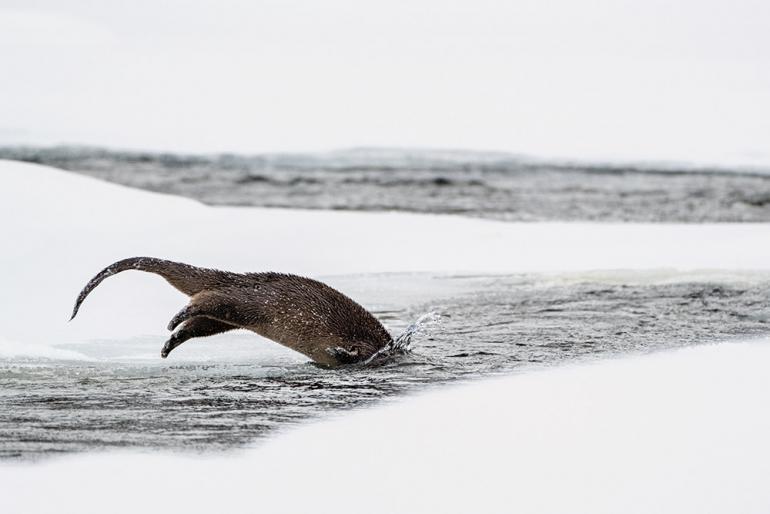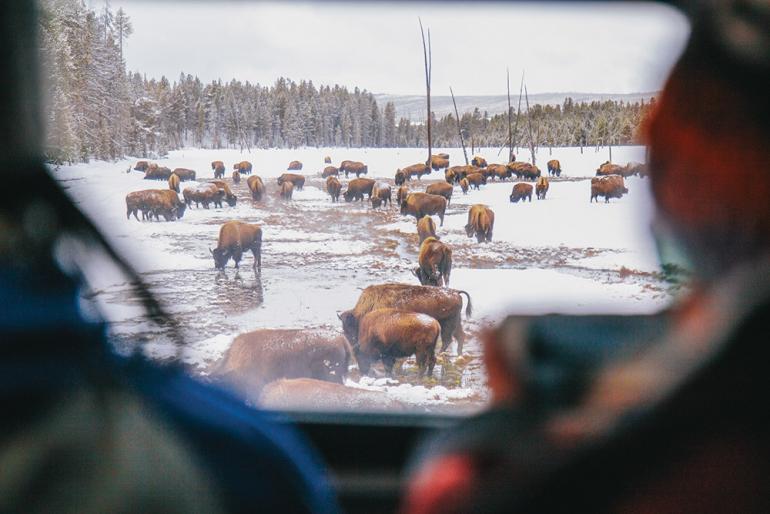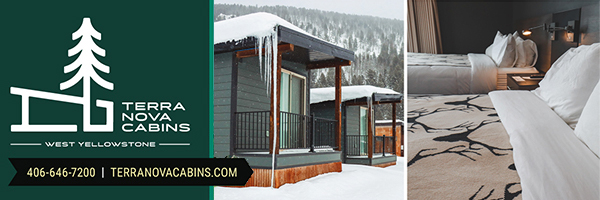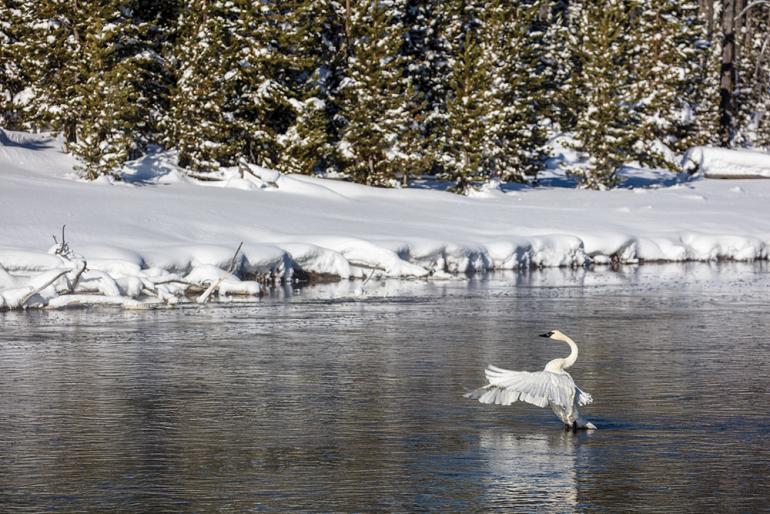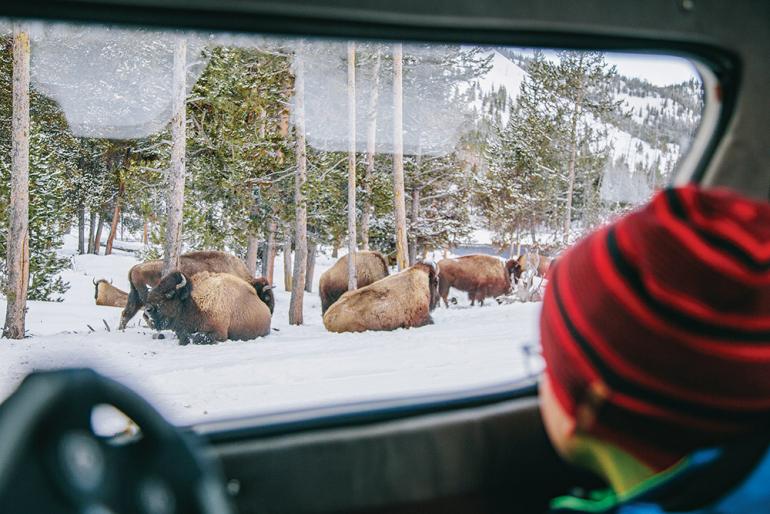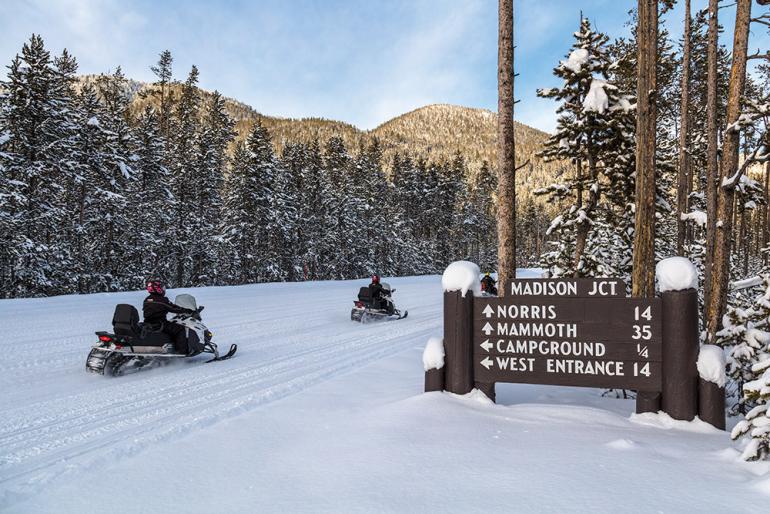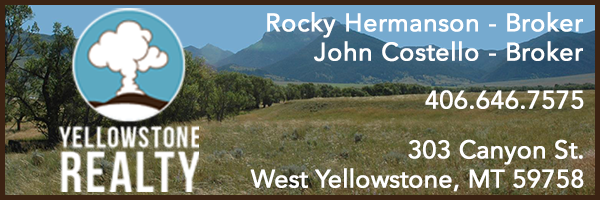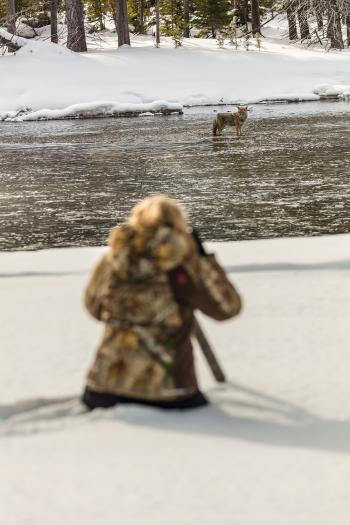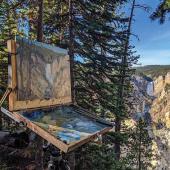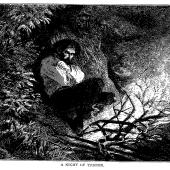West World
Wintertime in and around Yellowstone Park.
Over the last few years, Bozeman’s proximity to Yellowstone National Park has become increasingly apparent, thanks in part to a successful TV series filmed in the Bitterroot Valley. Wildly unrealistic depictions aside, Yellowstone is an epic expanse of near-immaculate wilderness harboring some of the most dense populations of wildlife in the country. Not to mention the unique volcanic and geothermal activity. While recent visitation has set record numbers, large crowds tend to decrease with the plummeting temps. Right now, the snow is flying and the cocoa is hot. So grab your snowshoes and cross-country skis, hop on your snowmobile or book a snowcoach—it’s time to take the snowy road less traveled down to West Yellowstone. Destination Yellowstone is a great resource to help plan your trip ahead of time ,or, swing by the West Yellowstone Chamber where you get there.
Unlike the bustling atmosphere of July, winter in West becomes a peaceful seclusion with plenty of solitude and beauty to go around. During this season more than ever, the vast landscape goes mostly untouched. It doesn’t take much at all to venture off and become one with the eternal stillness.
You see, though the town of West Yellowstone first established itself as merely an access point and entrance to Yellowstone National Park, it has long since become a proper community of its own, rich in history and culture. You can feel its authenticity as you walk the old town roads and visit the local watering holes, especially in winter. Go check out the Buffalo Bar to see for yourself. You’ll be greeted with good food and service along with impressive taxidermy. Tourism may slow down when the scene turns white, but the community comes alive with excitement, as this is the time for some of its trademark activities and events. A variety of family-friendly affairs fill the calendar, from ice-fishing contests to sled-dog races, and of course the renowned Rendezvous cross-country ski race. Don’t forget the Kids ’N’ Snow events, which seem to be a local favorite. Beyond events, there are limitless opportunities to spend a day—or a long weekend—outside. If you're lucky enough to have an extended stay, Terra Nova Cabins offers a year-round basecamp for all adventures. Here are a few staples.
Snowshoeing
As far as affordability goes, snowshoeing is the most accessible outing. Yellowstone can see some serious snowfall, and trust us when we say that it’s almost always worth the investment to rent or buy a pair snowshoes. ‘Round here, if you plan to hike in the winter without them, be prepared to post-hole—and post-holing sucks. However, if you’re properly equipped, there are hundreds of miles of local roads and trails to choose from, as well as limitless off-trail terrain. Stay close to town on a quick jaunt along the short, easy Boundary Trail and Riverside Trail loops, which will give you a feel for the endeavor. Once you have your footing, branch out to some of the adjacent sections and change up the scenery. For this, a great option is Refuge Point near Hebgen Lake. Here, you can take in a little of everything including wintery views, wildlife sightings, and the deep silence of nature. Dogs are allowed, so feel free to bring them along, so long as you pick up after them and keep them from harassing wildlife.
Snowcoach
Snowcoach rides might be the perfect balance of seeing as much as possible without compromising on the intimacy of slow travel. Snowcoaches have come a long way as of late. Options abound, from the classic, whimsical bombardier to the most current models, which might remind you of some sort of monster truck. The model will dictate what type of outing you’ll have, so make sure you look into that when booking the reservation. Whatever you choose, you’ll surely have a comfortable, smooth ride into the territory you set out for. Trips will take you several different parts of the Park, and it’s all worth seeing.
Cross-Country Skiing
Historically, cross-country skiing was the best means of transportation in West Yellowstone during the winter, after the railroad stopped running. Over time, the activity established itself as an iconic pastime in this town. Nowadays, thanks to the Rendezvous Trails and other neighboring zones, there are countless ways to enjoy a day on skis. Bring your own skinnies or rent a pair at the local shop where you can find out what’s been skiing well lately. For the groomed and maintained treatment, you can’t beat Rendezvous. Here you’ll find top-notch loops that host competitions with some of the best winter athletes in the world. Despite this notoriety, there is still something for every skill level, and most people have no problem striding and kicking their way around the tracks. See the previously mentioned Boundary and Riverside Trail options for neat, beginner options that don’t require user fees. Also nearby and free of charge are Bighorn Pass and Fawn Pass on Hwy. 191 where it dips into the Park. Here you’ll get a glimpse of some of the more remote backcountry options around. For cross-country gear and snowshoes, pay a visit to Freeheel and Wheel. With a surplus of gear and insight, the shop is a must-stop for anyone looking to explore the area by foot.
Snowmobiling
West Yellowstone, being one of the premier snowmobiling destinations in the country, has this activity to credit as one of its main economic drivers in the winter. With West’s average snowfall over 140 inches in town, and hundreds of miles of groomed and maintained trails providing convenient access to higher terrain, it’s easy to see why. For beginners and intermediates, these trails provide limitless options for exploration into the wild. For the more advanced and adventurous, take your sled off-trail into the backcountry to test your machine and skills. Start yourself off on the Two Top Trail, where you’ll climb your way up on groomed sections until the surrounding mountains all come into view. Afterward, challenge yourself at Lionhead on more variable terrain. As always, take proper precautions when traveling in avalanche country and check the forecast ahead of time.
So there you have it: a list of winter options so full you could spend all winter trying to tick them off. What are you waiting for? Go West.
Can’t get enough of Yellowstone? Looking to get your own piece of the pie? Yellowstone Realty is dedicated to making your land, home, or business purchase as simple as possible.
Pro Tip: Snow Shooting
Winter is an exceptional time of the year to pack up the camera gear and head into the Park. Wildlife congregates in the valleys to escape heavy mountain snowfalls, and sub-zero temperatures create a menagerie of landscape photo opportunities that rival any other time of year.
The early hours of the day are often best, especially for scenic river shots. With sub-zero temperatures, the typical morning fog is transformed into ice crystals on the trees, shrubs, and bushes that line the Park’s rivers, creating some truly ethereal photo opportunities. The unfrozen sections of Yellowstone’s rivers are also a great place to find wintering trumpeter swans, other waterfowl, and the ever-present river otter—whom you might catch a glimpse of scampering across the ice from one hole to another.
Photographing subjects that are very bright (snow and ice) or very dark (moose and bison) can be a challenge. Most cameras are calibrated to an 18 percent grey, meaning that your camera’s built-in light meter will, when photographing snow for instance, underexpose the subject. When shooting something dark, like a moose, the image will be over-exposed. If you’re using a film camera, you’ll have to take this into account on most winter shots. If you’re shooting digital, don’t stress too much. Today’s digital matrix metering systems are extremely advanced and do most of the compensation for you. If you would still like to do some compensation, try metering a blue sky or green trees first, then recompose and shoot your subject. This will give you a more accurate exposure no matter if your subject is light or dark.
Remember that Yellowstone is cold in winter, and whether you’re shooting from a snowcoach, standing by the side of the road, or skiing into the backcountry, the warmer you are, the longer you’ll be able to stay out in the elements to get that amazing shot. Wildlife photography takes patience, and it’s extremely difficult to wait for something photo-worthy to happen when you’re freezing to death—so dress warm. —Mike Haring


